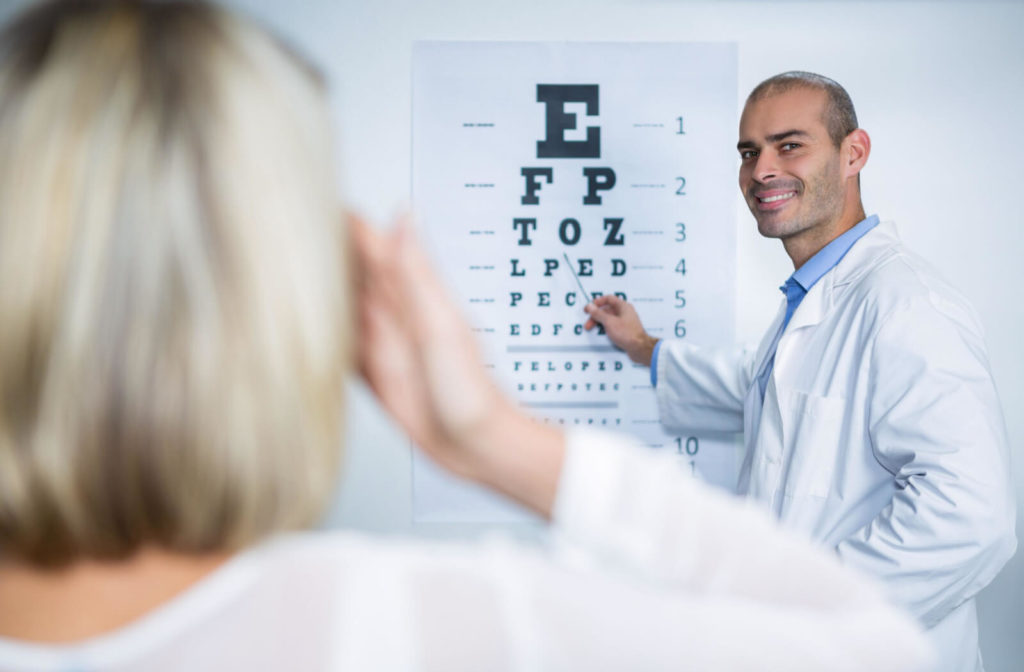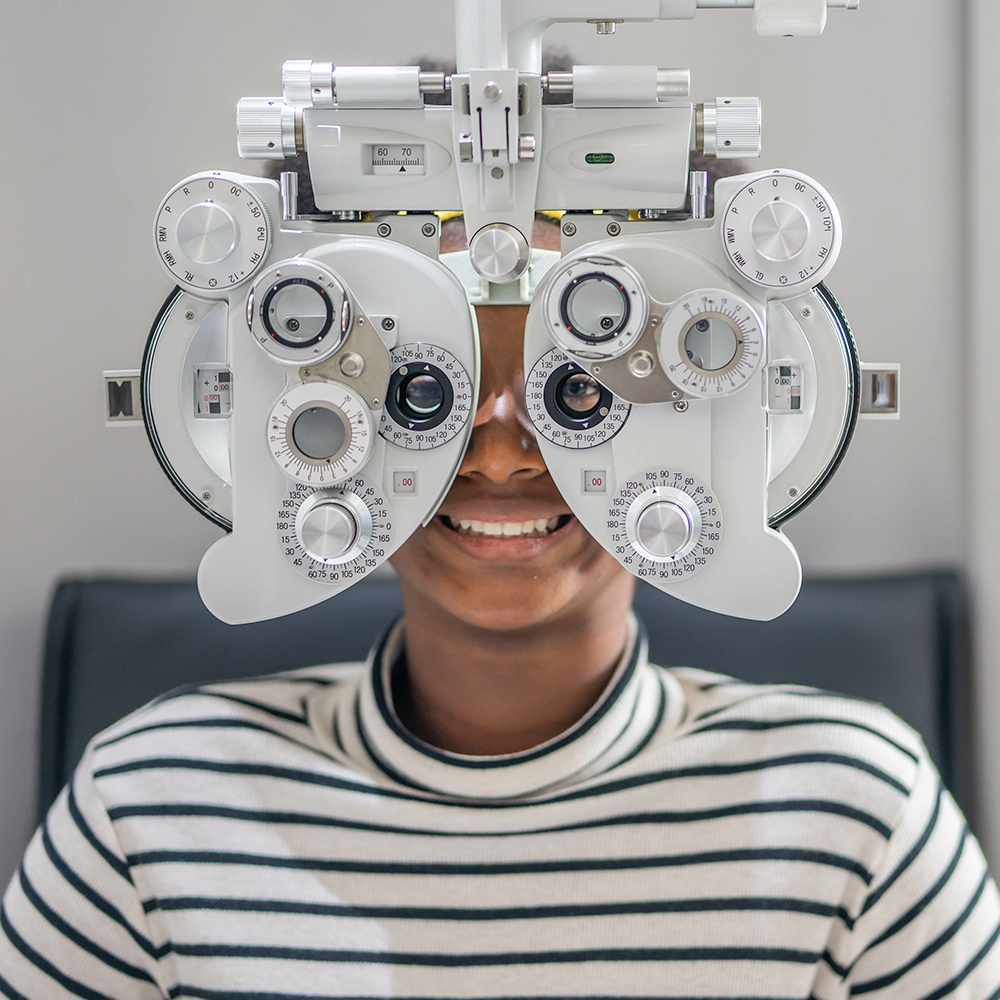Just How an Eye Doctor Can Help Prevent Vision Issues in Chino
Just How an Eye Doctor Can Help Prevent Vision Issues in Chino
Blog Article
Checking Out the most recent Technical Innovations in Optometry and What They Mean for Optometrists
From the precision of Optical Coherence Tomography to the nuanced insights used by AI-driven diagnostic tools, these technologies are setting new standards in individual assessment and treatment. As these improvements permeate the method, eye doctors are encountered with the challenge of embracing these devices to improve individual end results.
Advancements in Diagnostic Tools
Progressing the field of optometry, advancements in diagnostic tools have actually reinvented the way eye treatment specialists evaluate and identify eye problems and visual impairments. The previous years has witnessed significant technical improvements, enabling more exact and extensive examinations. Optical Coherence Tomography (OCT), for instance, provides high-resolution cross-sectional pictures of the retina, allowing for the early detection of illness such as glaucoma and age-related macular deterioration. This non-invasive imaging method has actually come to be indispensable in modern optometric technique.
One more key development is the intro of sophisticated corneal topography systems, which map the surface area curvature of the cornea with precision. These devices are especially useful for suitable call lenses and detecting corneal problems. Digital retinal imaging has transformed standard ophthalmoscopy, supplying thorough, panoramic views of the retina that help with comprehensive visual exams.
The advancement of wavefront aberrometry has actually additionally been essential, enabling the evaluation of refractive mistakes with unmatched accuracy (Optometrist Chino). This innovation assists in personalizing restorative lenses and enhancing medical end results for refractive surgeries. Jointly, these analysis developments encourage optometrists to supply exceptional individual care, making certain early treatment and customized therapy methods, eventually boosting visual health outcomes
AI in Person Administration
Building on the structure of innovative diagnostic devices, the unification of artificial intelligence (AI) in person administration represents a transformative leap for optometry. AI systems are increasingly employed to boost effectiveness, precision, and personalization in client treatment. By analyzing substantial quantities of information, AI can recognize patterns and anticipate potential ocular conditions, allowing eye doctors to tailor interventions extra properly. This capability is vital in managing chronic eye illness such as glaucoma and diabetic person retinopathy, where very early detection and continuous tracking are vital.
Furthermore, AI-driven platforms assist in streamlined client interactions and administrative procedures. Automated scheduling, online consultations, and customized follow-up strategies not only boost patient complete satisfaction but likewise maximize time administration for practitioners. These systems can triage patients based on the seriousness of their problems, ensuring that those in vital demand receive timely interest.
Furthermore, AI enhances decision-making by offering optometrists with evidence-based recommendations and therapy pathways. By integrating data from digital wellness records, AI tools supply understandings that educate medical choices, minimizing the risk of mistakes and improving client results. As AI remains to progress, its duty in patient management will likely increase, reshaping the landscape of optometric care.
Developments in Retinal Imaging
In the world of optometry, retinal imaging has seen impressive technical advancements that are improving analysis abilities and individual treatment. Technologies such as Optical Coherence Tomography (OCT) and fundus photography have actually reinvented just how eye doctors analyze the retina and picture.
Improved imaging techniques like OCT angiography are further refining diagnostic accuracy. Optometrist Chino. Such improvements facilitate the recognition of minute retinal changes that could represent condition development.
Additionally, improvements in fabricated intelligence are increasing retinal imaging by enabling computerized evaluation of huge datasets. These systems assist optometrists in recognizing patterns indicative of pathology, therefore improving diagnostic precision and efficiency. Jointly, these technologies are transforming retinal imaging into a cornerstone of modern-day eye care, improving end results and increasing therapeutic possibilities.
Teleoptometry's Expanding Duty
Teleoptometry is progressively becoming a crucial part of eye treatment, driven by innovations in data and analysis devices. As optometry welcomes electronic transformation, teleoptometry assists in remote consultations, enabling optometrists to expand their services past standard borders. This is especially useful in country and underserved areas where accessibility to specialized eye treatment is commonly minimal. By leveraging high-resolution video clip conferencing and advanced retinal imaging, optometrists can perform extensive eye exams from afar, making sure prompt diagnosis and treatment.
The combination of expert system (AI) further improves teleoptometry, making it possible for the analysis of visual data and helping in the detection of ocular conditions such as glaucoma and diabetic person retinopathy. AI-powered algorithms can rapidly translate complex imaging information, offering optometrists with important insights that boost scientific decision-making.
In addition, teleoptometry supports connection of care via smooth combination with electronic health and wellness records (EHRs), permitting optometrists to preserve detailed client histories. This ensures that people get constant and customized treatment also when speaking with different practitioners.
Regardless of these benefits, obstacles stay, consisting of making sure information safety and security and taking care of client assumptions. Teleoptometry stands for a considerable stride towards even more easily accessible, reliable, and patient-centered eye treatment. As innovation evolves, its role is poised to broaden additionally.

Future Fads in Eye Treatment
A myriad of ingenious fads is established to improve the future of eye treatment, driven by technological improvements and the developing needs of individuals. One substantial fad is the combination of expert system (AI) in diagnostics, which assures to improve the precision and performance of eye exams. AI formulas can examine large amounts of data from retinal pictures, potentially finding problems like diabetic retinopathy and glaucoma earlier than conventional methods.
Moreover, image source customized medicine is obtaining traction in optometry, with genetic testing educating personalized therapy plans. This approach intends to optimize client results by customizing interventions to private hereditary accounts. Wearable innovation, such as smart call lenses, is additionally on the horizon, supplying real-time surveillance of intraocular pressure or glucose degrees, therefore providing constant understandings right into eye and systemic health.
The fostering of enhanced reality (AR) and online fact (VIRTUAL REALITY) in training and individual education is an additional emerging pattern. These modern technologies supply immersive experiences that can boost understanding and abilities both for clients and optometrists. As these trends progress, optometrists must remain abreast other of technological innovations to give cutting-edge treatment, ensuring enhanced person results and complete satisfaction in the vibrant landscape of eye treatment.
Final Thought

Jointly, these diagnostic advancements equip eye doctors to deliver superior client care, ensuring very early intervention and tailored therapy strategies, inevitably boosting aesthetic wellness end results.

As these technologies proceed to advance, optometrists have to adapt and integrate them right into method, inevitably optimizing process performance and boosting the criterion of eye treatment supplied to individuals.
Report this page